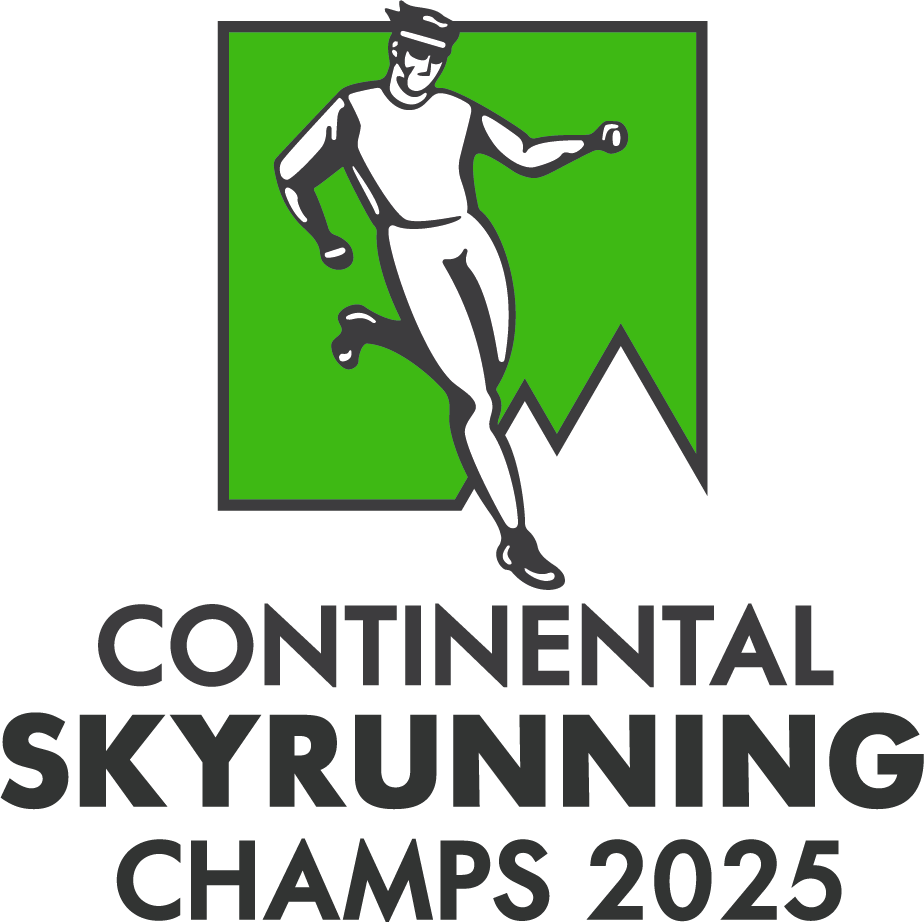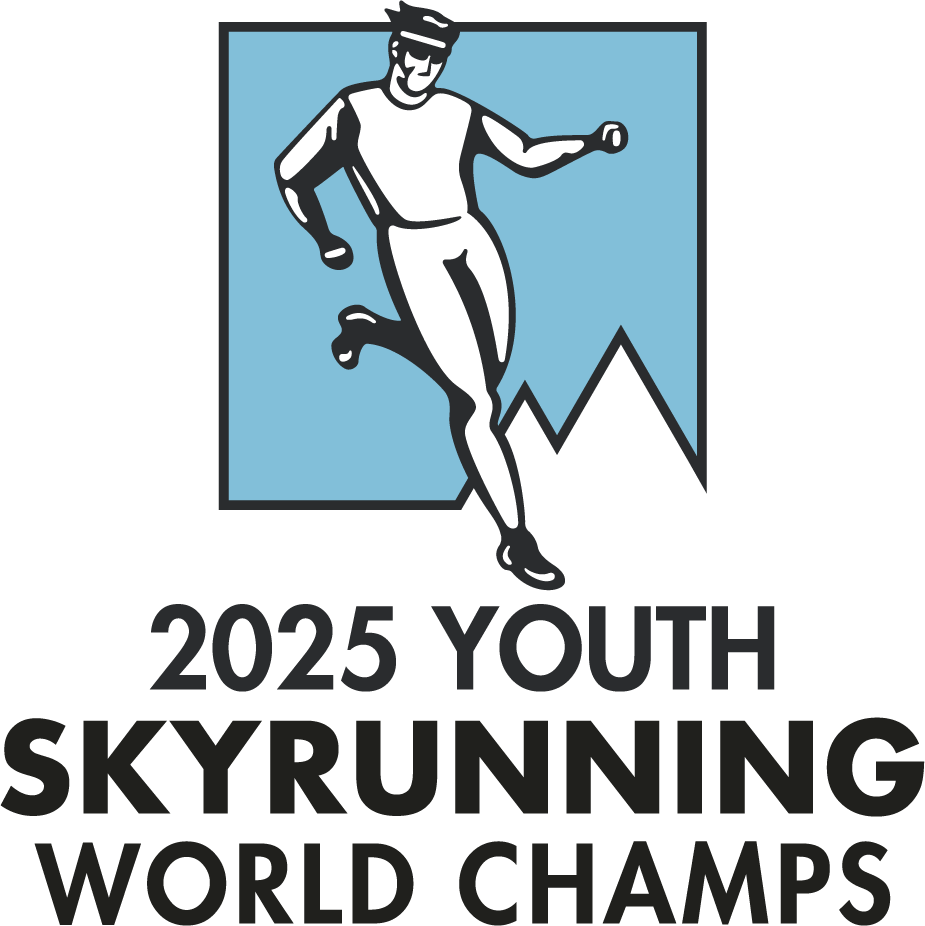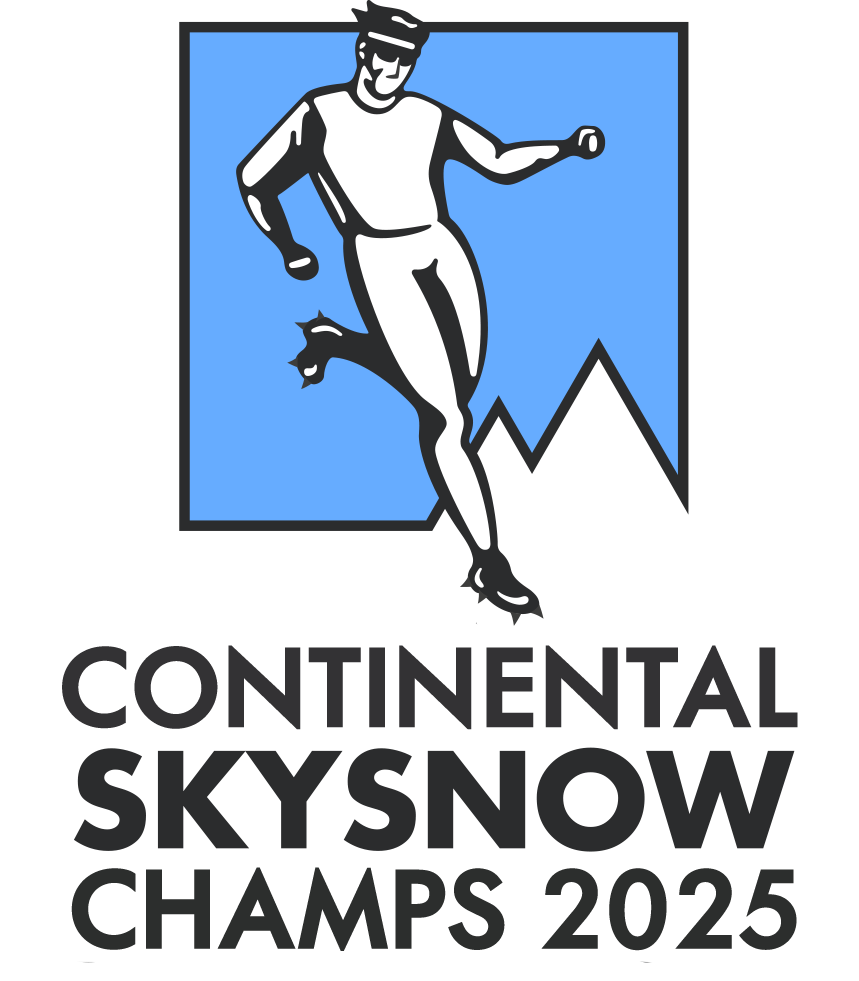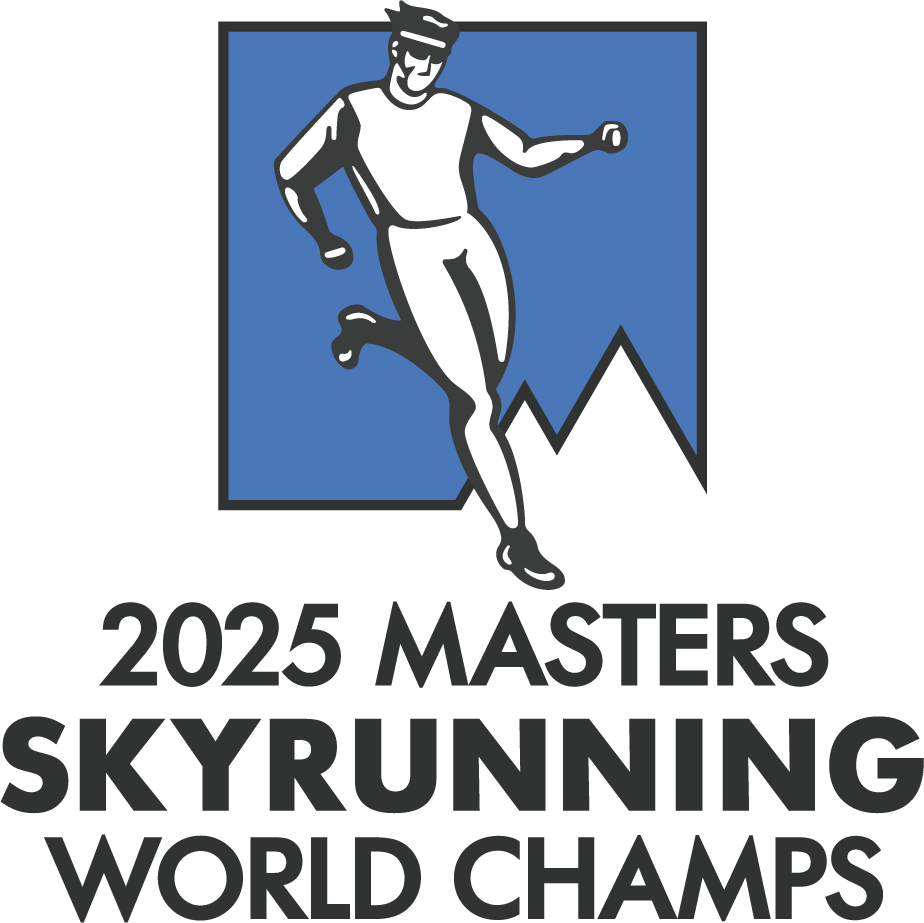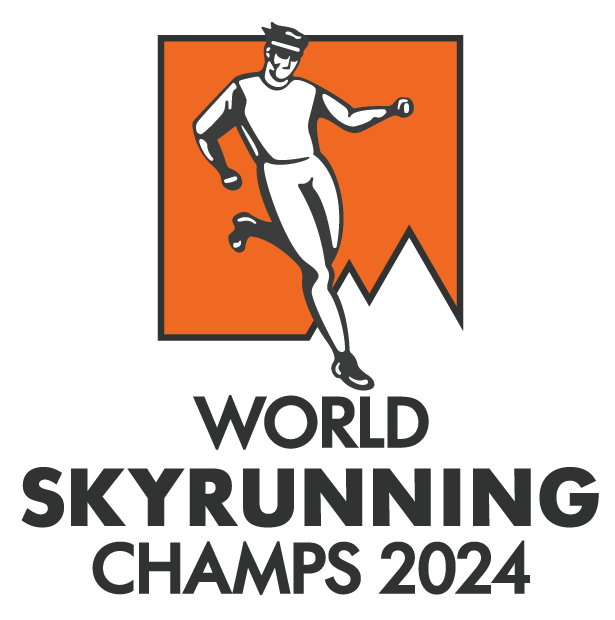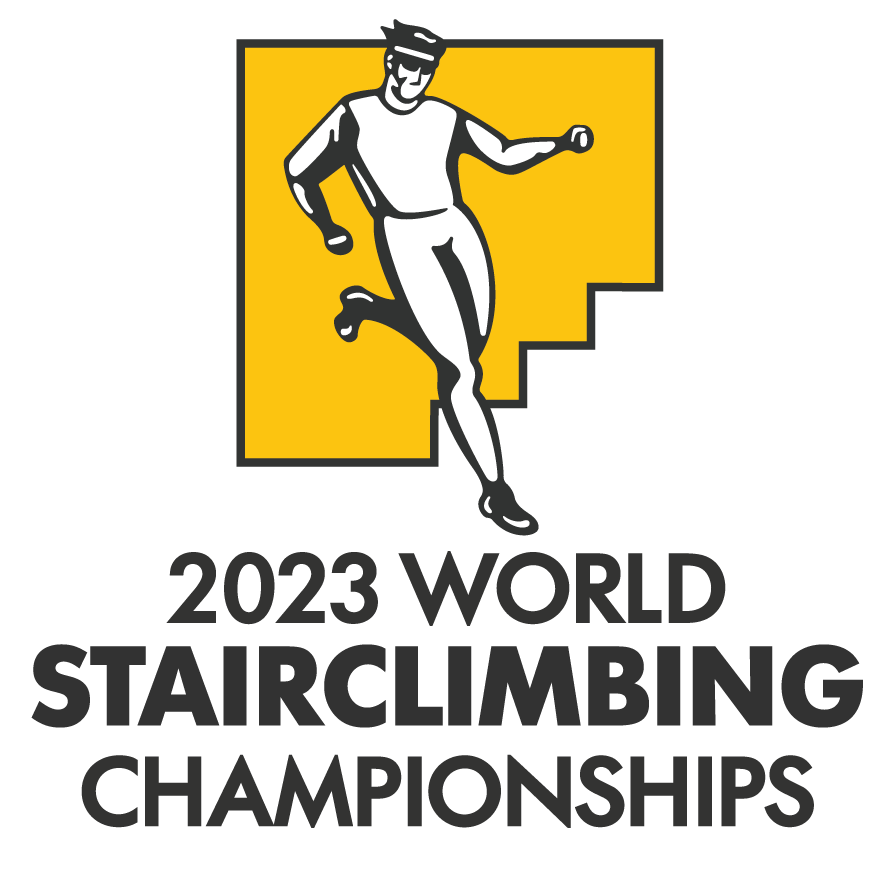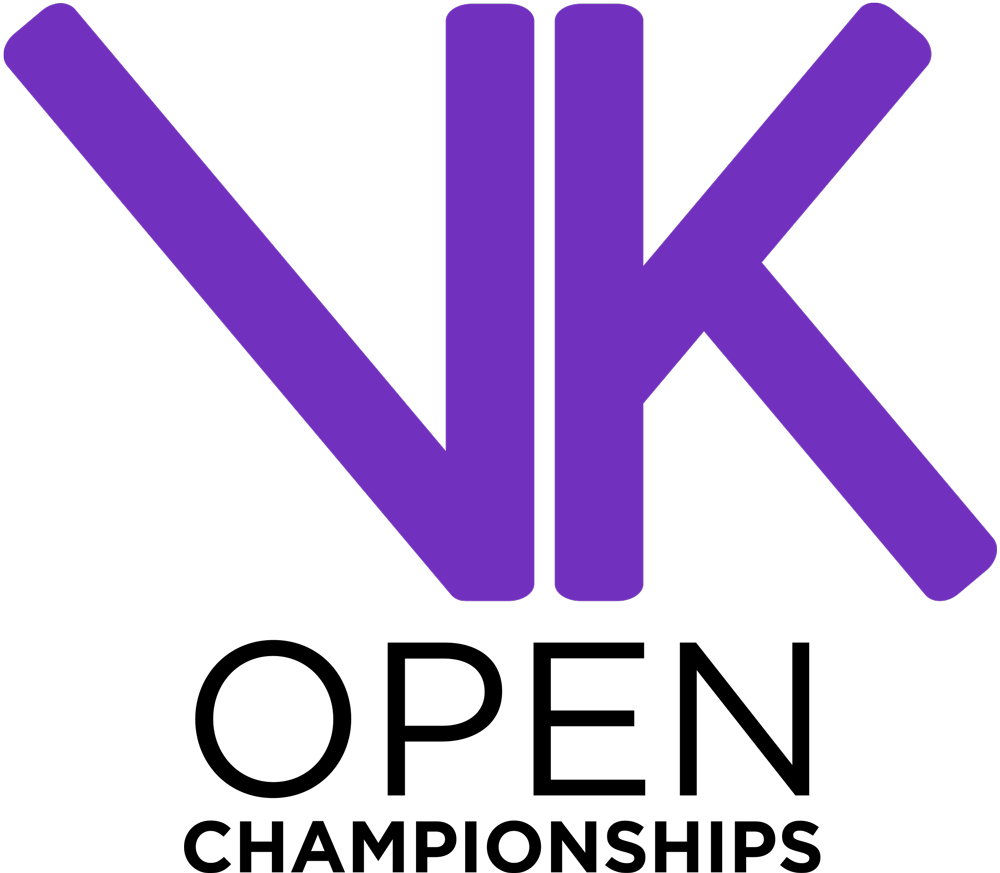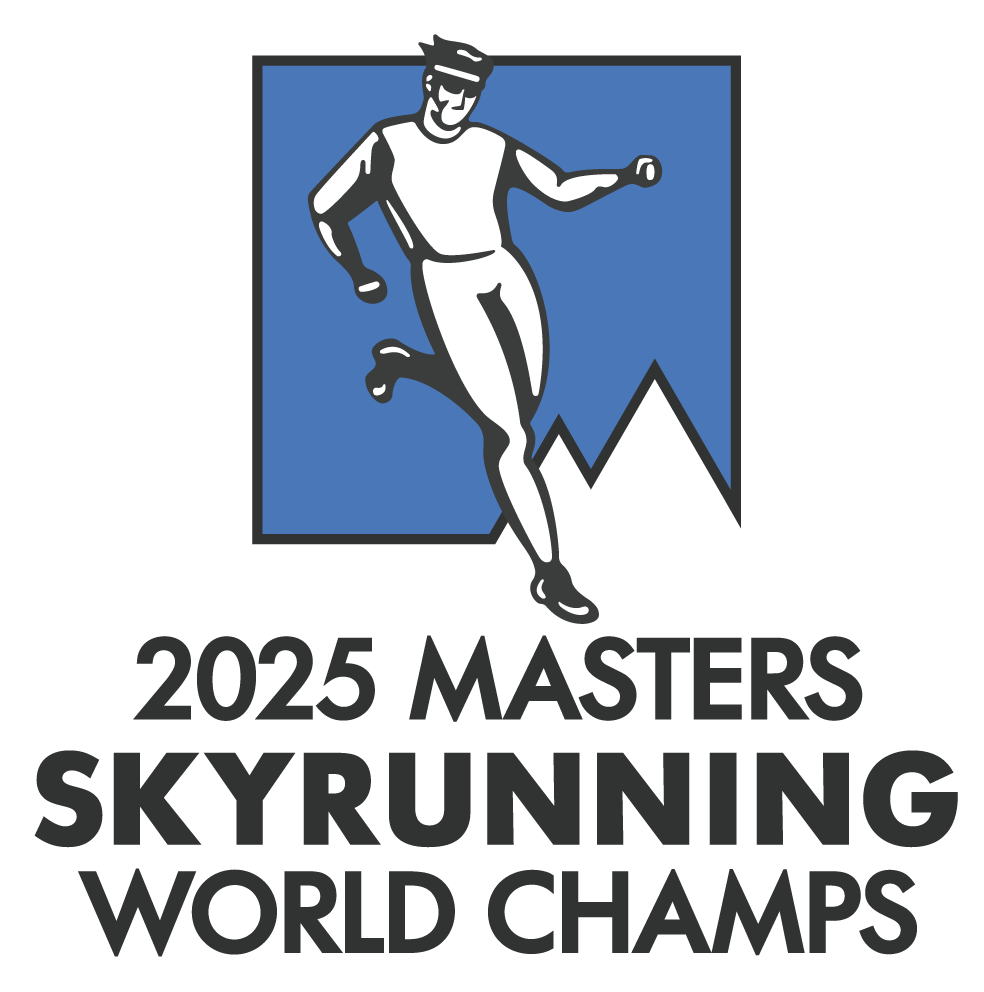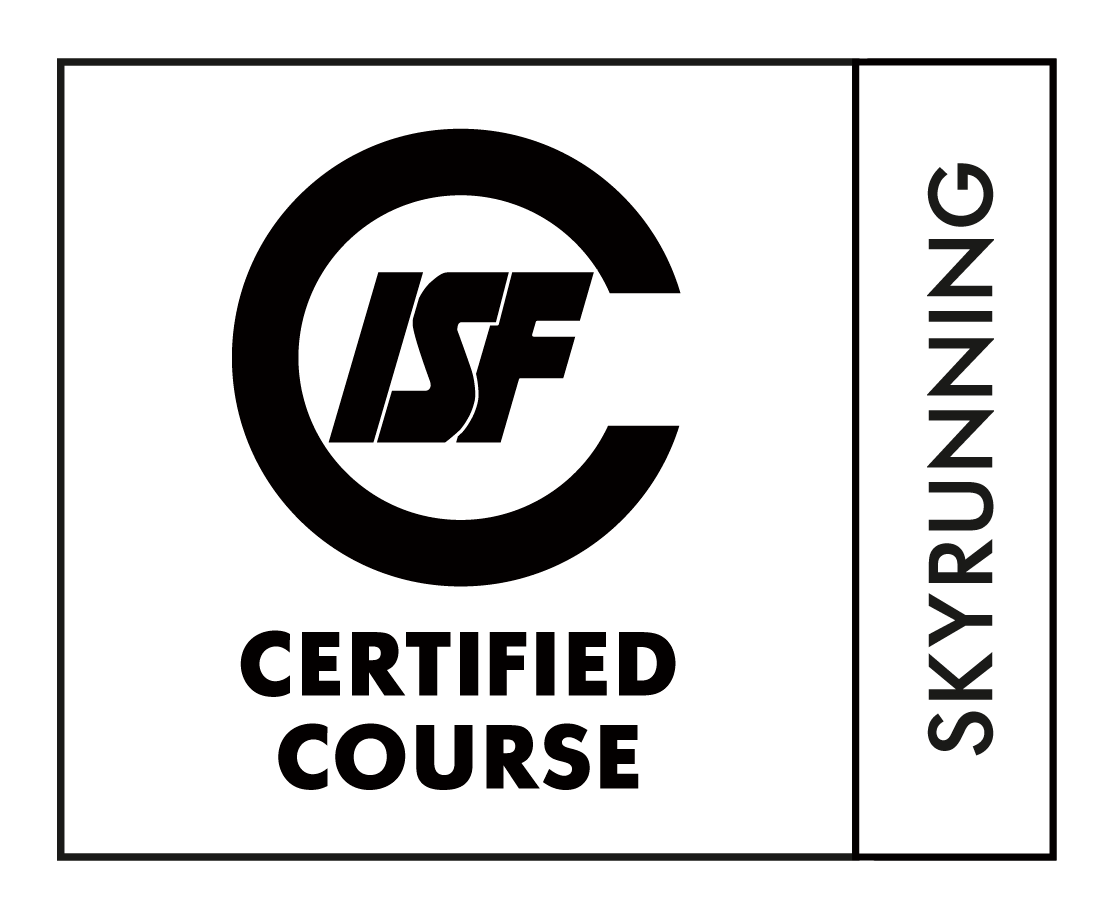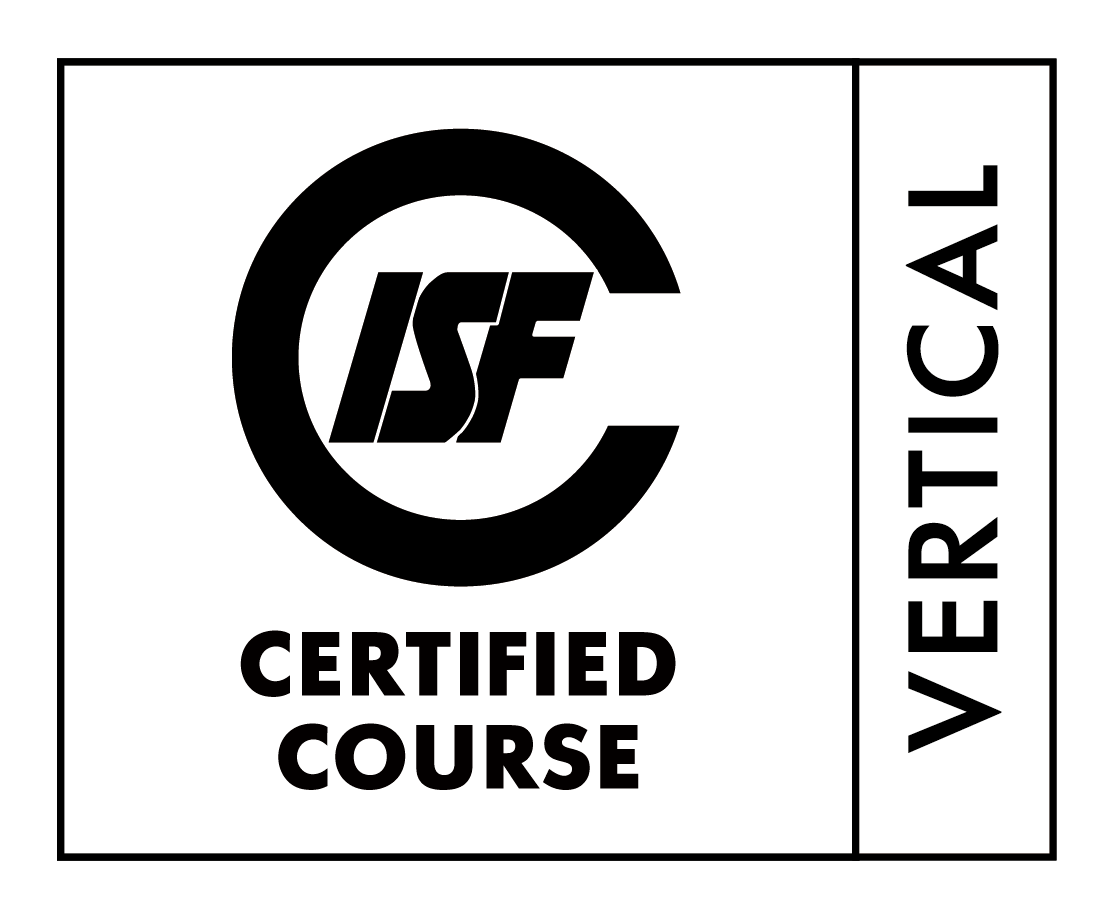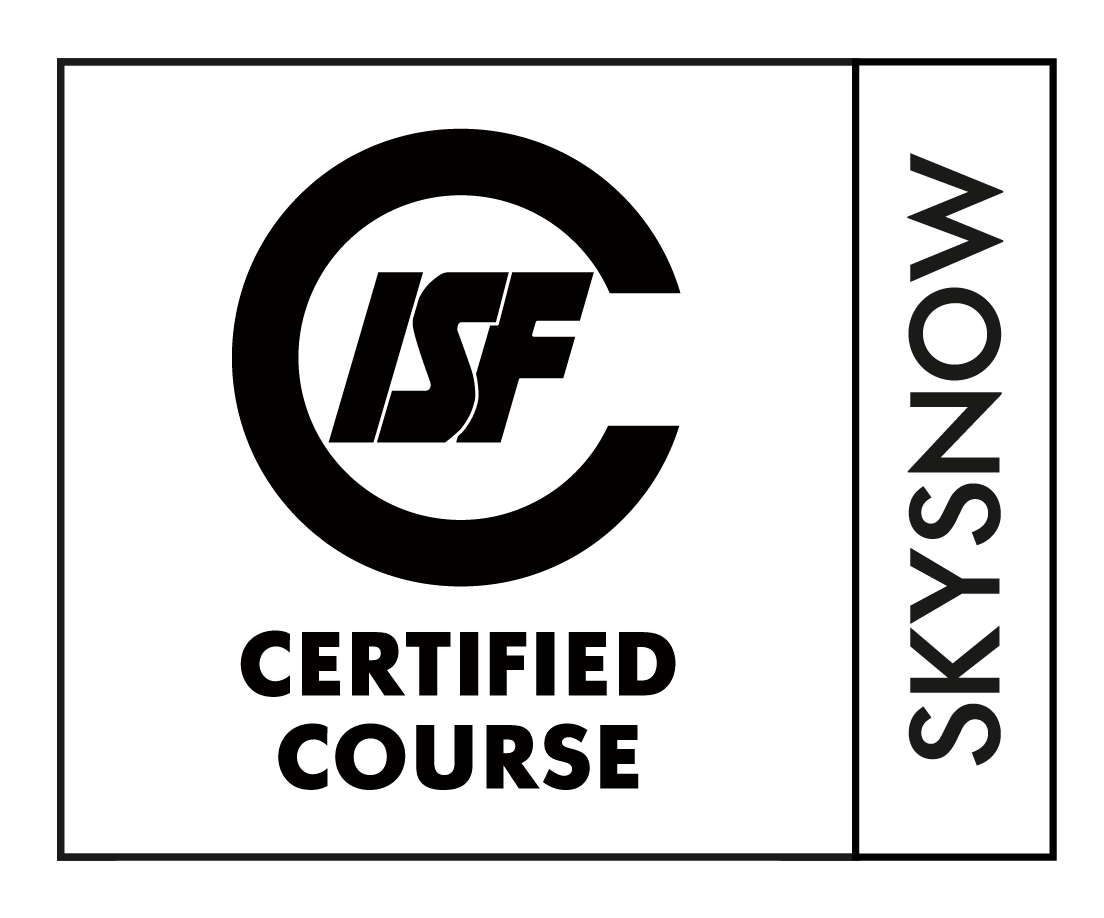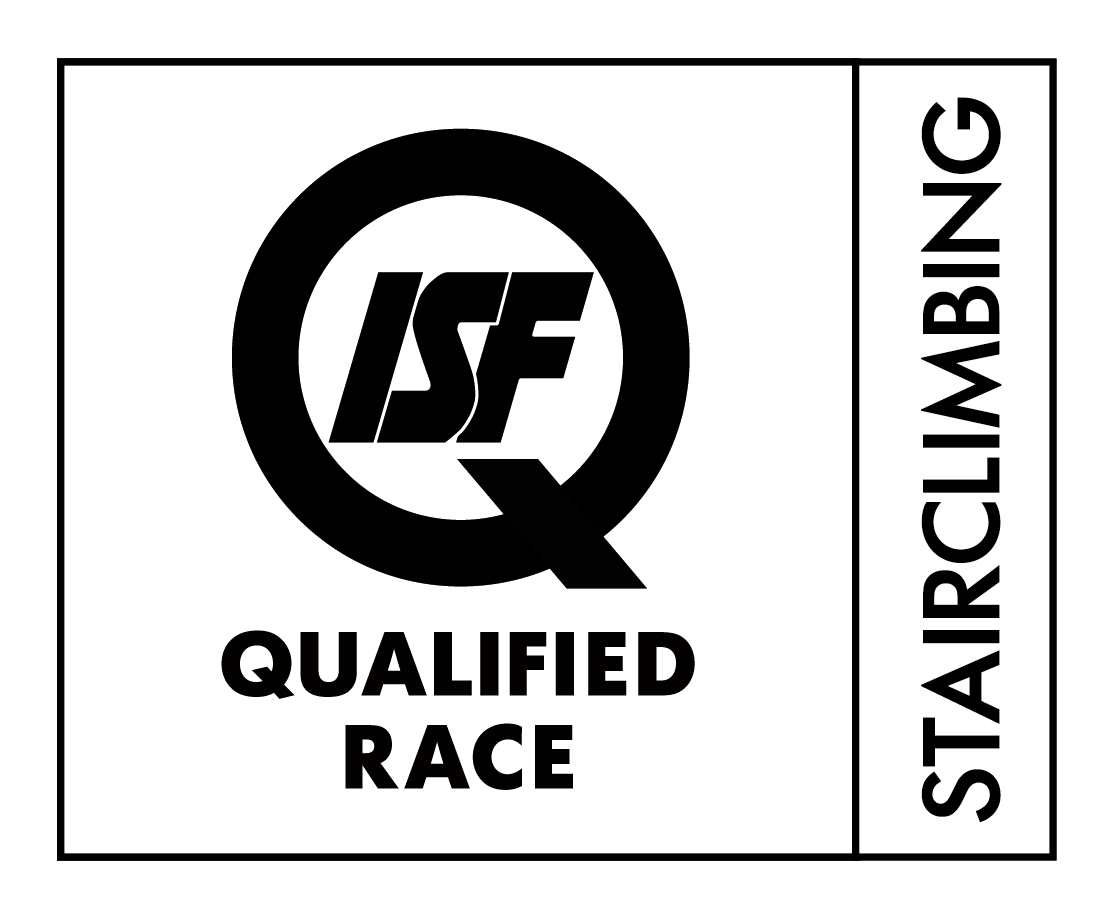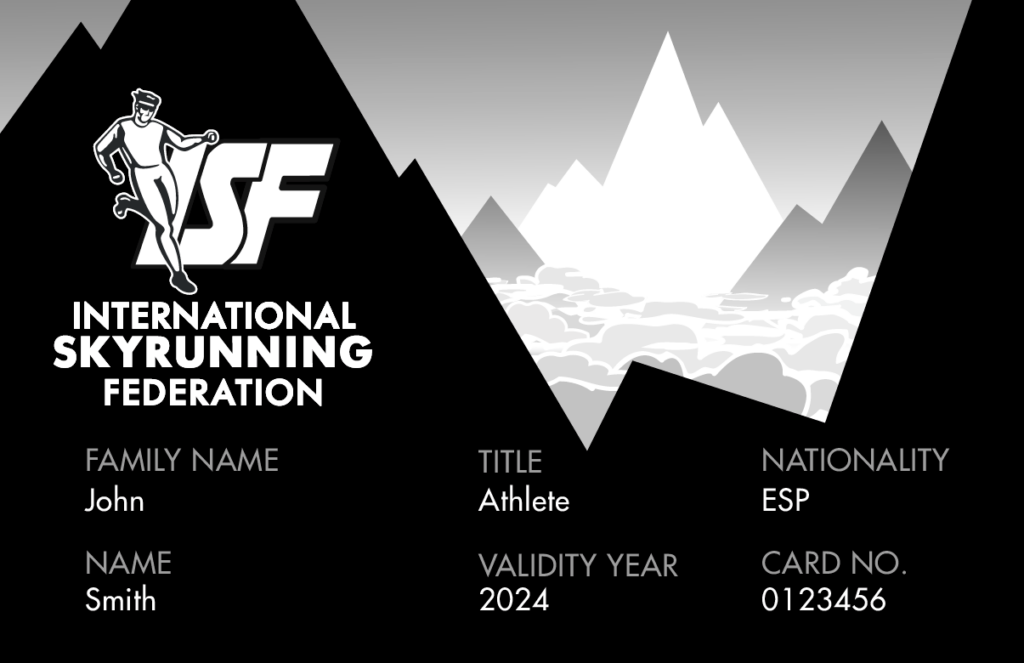International Skyrunning Federation Rules
1. Introduction
1.1 An international federation for skyrunning (running at altitude) has been founded in 2008 following the transformation of the Federation for Sport at Altitude (FSA), founded in 1995. The International Skyrunning Federation, hereinafter ISF, was created to promote, govern and administer the sport of skyrunning and similar multi-sports activities.
1.2 The ISF undertakes to diffuse the practice of skyrunning with respect for the environment, to promote private and public sports events, to develop training schemes and to foster the physical welfare of competitors. The ISF aims to administer the sport of skyrunning, competitions and events as an independent International Federation with its own legal entity.
1.3 The International Skyrunning Federation (ISF) is responsible for all aspects of international skyrunning and associated mountain multi-sports competitions at altitude. The principal purposes of the ISF are the direction, regulation, promotion, development and furtherance of the sport of skyrunning and high altitude multi-sports on a worldwide basis.
1.4 The ISF fosters links, networks and friendly relations among its members, their athletes and officials. The ISF is the final authority for all matters concerning skyrunning and similar mountain multi-sports competitions at altitude.
1.5 The ISF is a non-governmental international association with a non-profit-making purpose of international interest, having legal personality pursuant to Art. 60 ff. of the Swiss Civil Code. The ISF seat is in Switzerland.
1.6 These regulations aim to be the international reference for worldwide skyrunning competitions and to represent a guideline for national competition regulations. The purpose of these rules is to describe the obligations and rights of competitors who participate in the official ISF international skyrunning competitions and those that organise them.
1.7 The official language of the ISF is English.
1.8 The ISF official calendar is based on races organised by third parties who are financially solvent and have demonstrated the capacity to hold international standard events. The ISF has the task of coordinating the international race calendar and applying the official rules in these races.
1.9 Local race regulations must be consistent with the official ISF rules. In the event of conflict, the ISF rules and the decision of the ISF Referees will prevail.
2. Definitions
2.1 ISF – International Skyrunning Federation.
2.2 SKYRUNNER – An athlete who competes in skyrunning disciplines.
2.3 SKYRUNNING – Skyrunning is defined as the sport of running on mountain terrain on low, medium and high altitude with a steep incline. Hands and certain equipment may be used to aid progress according to specific rules. Technical sections are inherent to the sport, but the climbing difficulty must not exceed II° grade (UIAA). Events may be held year-round.
2.3.1 SKYRUNNING DISCIPLINES
Skyrunning disciplines are listed and defined in detail below. Courses must have a 6% minimum average incline over the total distance and at least 5% of the total distance must have an incline of 30% or more. The climbing difficulty must not exceed II° grade UIAA and the finishing time must be under 16 hours. Asphalt must be less than 15% of the total distance.
Races that reach over 4,000m altitude can except the usual parameters.
2.3.1.1 SKY – Races between 20 km and 45 km long. A tolerance of 5% in length is accepted.
2.3.1.2 SKYULTRA – Races between 50 km and 80 km long. A tolerance of 5% in the length is accepted.
2.3.1.3 VERTICAL – Uphill only races with minimum 800m vertical climb over variable terrain. The minimum average incline must be 20% and 5% of the total distance must be over 33% incline.
2.3.1.4 SKYSPEED – Races with 100m vertical climb and a minimum of 33% incline. A tolerance of 5% in the vertical climb is accepted.
2.3.1.5 YOUTH PARAMETERS – For athletes falling under Youth A and Youth B categories the SKY parameters are reduced with a 20% tolerance:
- Distance: 10 km
- Vertical climb: 1,000m
2.3.2 SKYSNOW – Races on snow (at least 70%) with the compulsory use of approved micro-crampons (see 5.5.2). Courses must have a 5% minimum average incline over the total distance and at least 5% of the total distance has an incline of 15% or more. Two disciplines are defined:
2.3.2.1 SKYSNOW VERTICAL – Uphill only races between 500m and 1,000m vertical climb, not exceeding 5 km in length with a minimum 15% incline.
2.3.2.2 SKYSNOW CLASSIC – Races over 9 km length with a minimum average incline of 5%
2.3.3 STAIRCLIMBING – Vertical races with an incline over 45% on stairs indoors or outdoors. The minimum vertical climb is 100m. Different disciplines may be defined.
2.3.4 SKYBIKE – Duathlons consisting of a road bike or mountain bike race with a skyrunning competition.
2.3.5 SKYRAID – Skyrunning team races over long distances possibly combining other sports such as cycling, skiing, climbing etc.
2.4 SKYRUNNING TRADEMARKS – The use of the trademarks below must be in agreement with the ISF. The race must be included on the Member’s National Calendar and have the ISF Certified Course Label.
2.4.1 SKYRACE® – race over 20 km distance and 1,200m vertical climb falling under the SKY or SKYULTRA discipline.
2.4.2 SKYMARATHON® – race over 42 km distance (5% tolerance) and 2,520m vertical climb. The name also applies to races up to or over 4,000m altitude.
2.4.3 VERTICAL KILOMETER® – race falling under the Vertical discipline with 1,000m vertical climb (5% tolerance) and not exceeding 5 km in length. Five percent of the total distance must be over 33% incline. Poles, ropes and climbing equipment are allowed. The Vertical Kilometer® is defined at various altitude levels (+/- 200m variable). Example: from 0 – 1,000m, 1,000 – 2,000m, 2,000 – 3,000m. A double or triple Vertical Kilometer® is also recognised.
2.5 SKYRUNNING TECHNICAL LEVELS – Additional factors such as average incline, altitude, snow fields, glaciers, etc, may be used to define the technical level of a course.
Skyrunning competitions
3.1 NATIONAL CHAMPIONSHIPS – Each nation is responsible for organising skyrunning national championships based on the ISF rules.
3.2 SKYRUNNING CONTINENTAL CHAMPIONSHIPS – These competitions are governed by specific regulations. The competitions may be open, depending on the geographic area. Only National Teams are ranked in the Continental Championships. All team members must be of the nationality of the country they represent and be in possession of an ISF Card.
3.3 SKYRUNNING WORLD CHAMPIONSHIPS – These competitions are governed by specific regulations. The competitions are open only to official teams. Only National Teams are ranked in the World Championships. All team members must be of the nationality of the country they represent and be in possession of an ISF Card.
3.4 YOUTH SKYRUNNING WORLD CHAMPIONSHIP – These competitions are governed by specific regulations. Only athletes from countries members are accepted. Only National Teams are ranked in the World Championships. All team members must be of the nationality of the country they represent and be in possession of an ISF Card.
3.5 MASTERS SKYRUNNING WORLD CHAMPIONSHIPS – These competitions are governed by specific regulations. The competitions may be open. Only National Teams are ranked in the World Championships. All team members must be of the nationality of the country they represent and be in possession of an ISF Card.
3.6 SKYSNOW CONTINENTAL CHAMPIONSHIPS – These competitions are governed by specific regulations. Only athletes from member countries are accepted. Only National Teams are ranked. All team members must have the nationality of the country they represent and be in possession of an ISF Card.
3.7 SKYSNOW WORLD CHAMPIONSHIPS – These competitions are governed by specific regulations. Only athletes from member countries are accepted. Only National Teams are ranked. All team members must have the nationality of the country they represent and be in possession of an ISF Card.
3.8 STAIRCLIMBING WORLD CHAMPIONSHIPS – These competitions are governed by specific regulations. The competitions may be open. Only National Teams are ranked in the World Championships. All team members must be of the nationality of the country they represent and be in possession of an ISF Card.
3.9 OTHER CIRCUITS – are open to individual skyrunners and sponsored teams with a specific ranking:
3.9.1 SKYRUNNER® WORLD SERIES (“SWS”) – international races open to individual skyrunners and sponsored teams with a specific format and ranking.
3.9.2 SKYRUNNER® NATIONAL SERIES (“SNS”) – Skyrunning races open to individual skyrunners and sponsored teams with a specific format and national ranking.
3.9.3 VK OPEN CHAMPIONSHIPS – Vertical Kilometer® races open to individual skyrunners and sponsored teams with a specific format and ranking.
3.9.4 VERTICAL WORLD CIRCUIT® (“VWC”) – Stairclimbing races in skyscrapers open to individual skyrunners and sponsored teams with a specific format and ranking.
3.9.5 SKYSNOW WORLD SERIES (“SSWS”) – SkySnow races open to individual skyrunners and sponsored teams with a specific format and ranking.
OTHER DEFINITIONS
3.10 IOC – International Olympic Committee.
3.11 NATION – Independent State recognised by the international community or country with a National Olympic Committee.
3.12 OPEN RACES – Races open to all runners.
4. Organisers’ rules
4.1 INTRODUCTION – Local race regulations must be consistent with the official ISF rules. In case of conflict, the ISF Rules will prevail.
4.2 BIDS FOR STAGING EVENTS – Applications to stage ISF competitions should be addressed to National Members or direct to ISF, requesting a bid application form. ISF Members have the right to candidate Continental and World Championships.
4.2.1 It is implicit that organisers applying to stage any ISF competition have read and accept the ISF rules and have the Course Certification Label.
4.2.2 Bids may include any of the following ISF competitions:
- Skyrunning World Championships
- Skyrunning Continental Championships
- Youth Skyrunning World Championships
- Masters Skyrunning World Championships
- VK OPEN Championships
- Stairclimbing World Championships
- Skyrunner® World Series
- Vertical World Circuit®
- Skyrunner® National Series
- SkySnow World Championships
- SkySnow Continental Championships
- SkySnow World Series
4.2.3 All bid applications must be accompanied by a document citing all the relevant information relating to the competition and the event in general including: financial budget, services for competitors, provision of technical staff, accommodation, meals, prizes and awards, invitations, promotion, press facilities, etc.
4.2.4 The ISF calendar must be approved by the Management Committee taking into account indications provided by the Technical Commission.
4.3 SPECIAL CONDITIONS – Each year the ISF will set quotas for participation in each of the competitions and other obligations such as: guaranteed entry and accommodation to the top ranked competitors, ISF staff, eventual television and/or video crews, photographers and journalists. A minimum cash prize for the race winners, cups, medals, trophies, etc, should also be included. These requirements are detailed in the bid application.
4.3.1 CONTRACT – The competition organisers must sign a contract with the ISF agreeing to a number of obligations, including rights and duties, sponsorships, awards, enforcement of rules, financial obligations, insurance, availability and supply of goods and services, promotion, etc.
4.3.2 The competition organisers and the national federation must take all necessary and useful administrative measures to ensure that the event takes place in the best possible conditions (assistance and rescue, medical assistance, safeguarding environment, etc).
4.4 PARTICIPATION FEE – A fee for hosting the event will be set each year with the object of contributing to general expenses and final prize money. Other requirements may be negotiated such as hospitality for technical staff, ISF representatives, media etc.
4.5 INSURANCE – National Members must ensure competition Organisers hold an insurance policy guaranteeing civil liability cover. Furthermore, they must ensure the Organisers abide by national legislation with respect to any local or national taxes that apply to the event and that they assume the event’s financial risk.
4.6 COSTS ASSUMED BY THE ISF – The ISF will supply trophies and/or medals for the various ISF Championships. The ISF is also responsible for the international promotion of the events, managing the ISF web site, social media, media relations, etc.
4.7 EVENT CALENDAR – The race date must be compatible with other races in the skyrunning calendar. In the case of incompatibility, the organisers must be willing to anticipate or postdate the race by seven days to be included in the calendar.
4.8 ORGANISERS’ OBLIGATIONS – Each race organiser is required to:
4.8.1 Obtain all permits and event insurance. Conduct relations with the local authorities including eventual traffic control and road closures near and/or on the course for participants’ and public safety.
4.8.2 Supply all organisational staff: administration, race registration staff, race director, course markers and marshals, start and finish officials, timekeepers, speaker, audio system, aid station and checkpoint staff, medical staff, rescue service, press office.
4.8.3 Manage race entries, distribute competitors’ race bibs, race bags, compile and check start list, print and supply results to officials and athletes.
4.8.4 Supply materials and prepare course with signage, placing flags or arrows at forks or at points where confusion may arise. Supply and manage check points and aid stations.
4.8.5 Provide medical assistance and rescue service.
4.8.6 Provide assistance for retired athletes.
4.8.7 Organise a pre-race briefing in a suitable location to host all participants and staff.
4.8.8 Award Ceremony: provide cash prizes, podium and backdrop.
4.8.9 Assemble ISF branding materials such as flags, banners, arch, mat etc. The materials will be provided by ISF. Allocate space for ISF partners to include flags, banners, arch, mats etc and provide a Brand Village area to include spaces an area allocated to ISF partners.
4.8.10 Provide accommodation for selected athletes, ISF officials and media in accordance with ISF.
4.8.11 Establish safe, segregated areas for the public, a segregated race start and finish area and designated areas along the course where necessary.
4.8.12 Provide transport to officials and press to enable various points of the course to be accessed (ie: jeep, motorbike, helicopter).
4.8.13 Carry out anti-doping controls in collaboration with ISF in certain events.
4.8.14 Provide use of toilets and showers close to the start and finish area.
4.8.15 Provide media accreditation and badges for access to designated areas. Segregated Press Area at finish line. Provide a start list, course information and results in digital format.
4.8.16 Provide a Press Room with free internet wifi connection.
4.8.17 Supply professional photographs and/or video footage to the ISF and media.
4.8.18 Each event must have a website with a link to the ISF web site. The ISF logo, and/or related logos must be inserted. Race news must be posted before and after the event with results.
4.8.19 In each event, in accordance with the ISF delegate, the organisers can specify what additional competitors’ apparel and equipment may be necessary.
4.9 ISF VISIBILITY – Race organisers’ promotional material including websites must include the ISF logo and the official competition logo supplied by ISF as well as those of any ISF partners. All advertising deemed inappropriate for health or moral reasons is forbidden. Any dispute on this point must be addressed by the ISF Communication and Marketing Commission. ISF visibility granted by the organisers consists of:
- A full page advertisement in the race brochure, the relative logos in advertisements, websites, social media and on posters and on any printed material.
- ISF logos and/or banners together with those above to be placed on the start/finish arch and in the finish line area and on the award stand.
4.10 STANDARDS – Race organisers must comply with the Hosting Standards and eventual Style Guide.
4.11 ORGANISERS’ VISIBILITY – Visibility will be given to organisers in the eventual promotional material produced by the ISF, on the official website and through federal communication.
4.12 PRESS OFFICE & PUBLIC RELATIONS – The organiser’s press office is responsible for local and national promotion and communication, including leaflets, posters and banners posted in the area. Pre and post race press releases must be prepared and supplied to the ISF together with all images, results and any other relevant information on the competition by email within 24 hours of the closure of the event including professional photographs and video.
4.13 ECOLOGICAL ISSUES – Race organisers must take into account ecological issues before, during and after the race. Reference may be made to the ISF Environment guidelines.
4.14 Competitors, trainers and team managers cannot be officials.
5. Race rules
5.1 INTRODUCTION – Local race regulations must be consistent with the official ISF rules. In case of conflict, the view expressed in these rules and decisions of the ISF representatives will prevail.
5.2 RACE STAFF – Each race organiser must appoint the following organisational staff:
- Race Director – Responsible for all organisational aspects and liaison between the organisers, technical delegates, ISF officials and local authorities. Responsible for the timekeepers, the results, their publication and providing results and other details to ISF.
- Race Office – Responsible for registering participants, accommodation, etc, and liaising with ISF.
- Course Director – Responsible for the race course, design, marking, checkpoints, aid stations and supplies etc. This duty includes environmental responsibilities. The CD is responsible for the safety of all aspects of the race, hazardous points, emergency medical services, location of evacuation points, etc, for competitors and spectators.
- Press Officer – Responsible for all media relations and creation and distribution of press releases, social media and video. Accreditation, supply of eventual Press Kits, all race information and results, badges. The Press Officer, together with the Race Director, co-ordinate special transport to access the course (ie motorbike, lifts, helicopter). The Press Officer is responsible for organising eventual Press Conferences and must coordinate their efforts with the ISF.
5.3 COURSE MARKING – The organisers must guarantee basic signage (flags or other signage, preferably fluorescent) for the safety of the competitors. It should be made of biodegradable material and removed immediately after the closure of the competition.
5.3.1 In the event of a clearly defined course without flags or other signage, safety measures and special check points must be adopted by the organisers. These points must be explained prior to the event at a specific briefing.
5.4 SAFETY – The organisers will guarantee, with specialised professional staff, the safety of all persons connected with the competition: competitors, public, course marshals, checkpoint and aid station staff etc, with the eventual collaboration of police, mountain guides, medical services, ambulance service, rescue and emergency services. A rescue and safety plan must be provided.
5.4.1 Special attention should be paid to areas which might present a risk for competitors’ safety: water, snow and ice, crevasses, road crossings, steep inclines, exposed crests etc. These points should be reinforced with extra personnel, information panels, etc. In some cases, ropes or chains may be necessary to aid competitors.
5.4.2 Race headquarters and the principal organisers must be connected by radio to all checkpoints and rescue teams. Those included in this service are the ISF representative, the jury chairman and course director.
5.5 COMPETITORS’ APPAREL AND EQUIPMENT – In addition to individual race rules it may be necessary to include the use of tights, gloves, hydration packs, helmets, sunglasses, headlamps, etc, depending on the course and/or weather conditions, In the SKY and SKYULTRA disciplines, the use of windproof jackets (or thermal blankets), trail running shoes and socks is compulsory. Race organisers and ISF referees may recommend variations. The compulsory or recommended need for this equipment must be online, posted before each race and elaborated in the pre-race briefing.
5.5.1 The use of poles is regulated by each race organiser either by allowing their use for the entire race, in a specific section, or even prohibiting their use. If using ski poles, it is compulsory to protect the points of poles.
5.5.2 SkySnow equipment: micro-crampons are compulsory. Micro-crampons allowed for SkySnow competitions must have at least 10 metal 8/10mm spikes distributed between toe and heel. Shoes with incorporated crampons are allowed provided they have at least 10 metal 8/10mm spikes.
Any other type of shoe is forbidden (athletic tartan spike shoes, football shoes), or mountain crampons. A GPS tracker is recommended.
Poles may be allowed by the organisers according to 5.5.1
Compulsory equipment:
- Long-sleeved thermal shirt, long-sleeved waterproof jacket with hood, ankle-length thermal tights, gloves and hat
- Sunglasses during daylight
- Front light and rear red light (with spare batteries) during darkness
- Thermal blanket
- Mobile phone turned on with sufficient battery
5.6 COMPETITORS’ NUMBERS – The organiser will provide the participants’ numbered bibs.
5.7 START AREA – Must be closed and should only be accessed by competitors who have entered and are on the start list. A control must be carried out on the required apparel and equipment, that the bib number corresponds to the name and that it is correctly positioned. Entry in this area is prohibited to all those who do not meet the above requirements.
5.8 CHECKPOINT CONTROLS – Checkpoints must be set up at significant points along the route: summits, passes, forks or junctions, etc. Marshals must be equipped with radios and be able to communicate with race headquarters. Marshals must take note when competitors pass through their checkpoint and record their arrival order and register retirements. If a race is cancelled or stopped marshals must check the runners through these points for safety purposes.
5.8.1 Marshals must immediately report any infractions of the rules or offences committed by competitors to race headquarters. Marshals may also convey special instructions from race headquarters to competitors (ie to wear a jacket, or that the race has been stopped etc).
5.9 AID STATIONS – The organisers must provide sufficient supplies at the aid stations for the duration of the race or make sure that athletes are self-sufficient. It is recommended to provide liquid supplies every 10 km or every 800 meters of vertical climb (whichever is first met). At least one aid station will provide solid food at the halfway point in the race. Near the finish line, a specific area for competitors will provide both solid food and liquids.
5.9.1 Assistance by crews or supporters to help competitors is only permitted 100 metres before and 100 metres after aid stations. The organisers are responsible for removing signage and/or litter on the course and at checkpoints and aid stations.
5.9.2 In the event too few aid stations are available, other points of assistance to competitors may be agreed on between the organisers and the ISF Technical Commission.
5.10 FINISH LINE – At least 100 metres before the finish line the course will be closed with barriers for the exclusive use of competitors. The width of the finish line should be approximately five meters.
5.10.1 After the finish line an area with restricted access will be provided for the athletes. Their compulsory clothing and equipment will be checked here. Only accredited staff with badges may enter this area: organisers, medical services, press and television, etc. Toilets and showers must be available in the vicinity.
5.11 WINNERS – Every race can have only one winner in each category based on a photo-finish or other control system. In the event neither of the previous options are resolved, the final decision will be made by the jury. Only races that time each runner (Vertical Kilometer®, Stairclimbing or an individual start for example) may have a tie.
5.12 FINISH AND RESULTS CONTROL – The organisers will ensure timing controls at the finish line, under the supervision of an ISF delegate or race Referee. If an electronic timing system is used, then times and finishing order are established by this system. If the race does not use an electronic timing system, then times and finishing orders are established when the competitor’s chest crosses the finishing line (verified by photo finish, film, referees etc).
5.12.1 The organisers will provide competitors’ lists in order of arrival time, and to referees whenever requested. Provisional results must be available in printed format as soon as the race is over. These results may not be considered official without the supervision and approval of the referees.
5.13 JURY – The composition of the jury must be indicated before each race in the various ISF Championships and include an ISF representative, a course director and an ISF international referee. The decision of the jury is final by the majority, and in case of dispute, the decision of the ISF Referee will be applied.
5.14 ROLE OF THE JURY – The role of the race jury is to make decisions concerning any race issues, address adverse weather conditions, approve solutions to conflicts, assess claims and decide on their outcome, ensure that races and rankings are standardised, guarantee sporting fairness and make decisions about questions of any kind which appear incomplete or unclear.
5.15 ISF REPRESENTATIVE – The highest official attending a race in the various ISF Championships is the ISF representative, delegated by the ISF president if not present. The task includes coordinating relations between the ISF and the organisers and national federation representatives, ensuring that all regulations are adhered to, including those concerning anti-doping, that the correct protocol is adhered to and appropriate trophies awarded.
5.16 ISF RACE REFEREES – ISF Referees ensures that all regulations are adhered to and, together with the organisers, must attend safety committee meetings and race meetings, ensure sporting fairness, supervise and sign official rankings, receive any claims submitted and that the event is staged with respect for the environment. Each international competition will designate at least one ISF referee.
5.17 BRIEFING – Competitors are required to understand all aspects of the race: the rules, the course etc, and a briefing should be organised to illustrate this. The following is a basic guide:
- Presentation of race officials, particularly the jury and ISF representatives
- Weather forecast, temperatures, wind speed, etc;
- A race description using visual aids (slides or video), aid stations, checkpoints, any difficult areas, various technical features;
- The equipment required for the competition;
- Cut-off times and cut-off points;
- Daily event schedule with times and places for: breakfast, public transport to and from the competition, car parks, race starts and finishes, anti-doping controls, meals, awards and closing ceremony, etc;
- Race services: drop off and collection points for clothing, changing rooms, showers, catering facilities;
- Information about good environmental practice to be respected during warm-up and competition;
5.18 RACE CANCELLATION – The races cannot be cancelled or postponed unless in extreme cases. Each race organiser must prepare an alternative reserve course in the case of unfavourable weather conditions such as fog, snow etc.
5.19 ANTI-DOPING CONTROLS – Anti-doping controls may be carried out in any of the races according to the rules of each nation, the WADA protocol and in agreement with the national federation concerned.
5.20 OFFICIAL CEREMONIES – The organisers will ensure that prizes are awarded (without gender discrimination) to at least the first three men and three women ranked in the race.
5.21 EVENT SCHEDULE – The ISF and the race organisers decide together the event programme, race date, time, meetings, awards, etc.
5.22 ENVIRONMENTAL ISSUES – The organisers must take all necessary measures to avoid designing routes that cross areas with sensitive ecosystems, ensure the rapid removal of race marking at the end of the race, rapid removal of all waste material discarded by spectators and participants and that only natural biodegradable products are used for marking, etc.
6. Official competitions
The Regulations of each official competition, Championships, Series or Circuit, in accordance with the ISF general rules, will be published in their respective sections on their websites.
SKYRUNNING CIRCUITS
6.1 INTRODUCTION – The Skyrunner® World Series (SWS), is a promotional circuit contracted by ISF to a third party. The Vertical World Circuit® (VWC) is also contracted by ISF to third parties. Skyrunner® National Series (SNS) are circuits managed by the ISF through its Members or third parties. The VK OPEN Championships and SkySnow World Series (SSWS) are a circuit managed directly by the ISF.
The race circuits are open to individual runners and teams.
6.1.1 The SWS, SNS, VWC, SSWS and VK OPEN Championships are based on a number of selected races conforming to ISF parameters.
6.2 RACES – The selected SWS, SNS, VWC, SSWS and VK OPEN races must comply to ISF rules and will be included in the national calendar of each ISF Member.
6.2.1 Each Member and Aspirant Member must recognise the Skyrunner® National Series Organiser contracted by ISF, as the sole and exclusive organiser of the Skyrunner® National Series and as a consequence feature all races chosen by the National Organiser on their national calendar.
6.2.2 The Member or Aspirant member will ensure that no other commercial skyrunning circuits or series are organised in their country.
6.3 FEATURES – SWS races can be either SKY or SKYULTRA, while SNS race can include SKY, SKYULTRA and/or VERTICAL disciplines. SSWS races can include either CLASSIC or VERTICAL
6.3.1 EXCEPTIONS – Exceptions to 2.3.1 may be made with the object of giving nations without the requisites the opportunity of participating. Exceptions to the basic parameters can be evaluated case by case.
6.4 SKYRUNNER® WORLD SERIES, VK OPEN CHAMPIONSHIPS, SKYRUNNER® NATIONAL SERIES, VERTICAL WORLD CIRCUIT®, SKYSNOW WORLD SERIES INDIVIDUAL POINTS SYSTEM – Each race will assign points based on the winning men’s/women’s results according to the individual ranking systems.
6.4.1 The ranking in each circuit will be determined each year according to the number of races.
6.4.2 Bonus points may be applied in selected races for all competitors.
6.4.3 In the event of a tie, specific rules may be designed to define the winner.
6.4.4 All circuit rankings can be considered for ISF general ranking.
6.5 SKYRUNNER® WORLD SERIES, VK OPEN CHAMPIONSHIPS, SKYRUNNER® NATIONAL SERIES, VERTICAL WORLD CIRCUIT®, SKYSNOW WORLD SERIES TEAM POINTS SYSTEM – A team ranking system may be defined, based on the individual points accrued by team members in each race.
ISF CHAMPIONSHIPS
6.6 GENERAL – The World Championships are open only to official national teams, while the Continental Championships may be open. Individual medals and titles will be awarded to the champions in each discipline. Only nations will be ranked.
6.6.1 National teams from countries without full ISF membership may participate at the discretion of the ISF Board. A registration fee set by the ISF is payable. The ISF rules and regulations must be strictly adhered to. Only one team will be allowed per nation.
6.6.2 All team members must be of the nationality of the country they represent.
6.6.3 The selected races must have the Certified Course Label.
6.6.4 Team members must wear a national jersey in competition. The clothing should clearly indicate the country the athletes are representing and can also show sponsors.
6.7 NATIONAL TEAMS – The athletes of each country must be declared on the relevant ISF form at the beginning of the Championships and updated only for registering new members at least ten days before each race.
6.8 REGISTRATION – Skyrunners with dual nationality must select one nationality to represent at the beginning of each season.
Skyrunners who have previously represented another country in World or Continental championships or in World or National Series recognised by the ISF, may represent their new country provided that at least three years have passed since they last represented their former country. This period may be reduced or cancelled, with the agreement of the ISF and the national federations concerned.
6.9 INDIVIDUAL POINTS SYSTEM – Each race will assign points based on the winning men’s/women’s results according to the “Ranking points breakdown: 100-88-78-72-68-66-64-62-60-58-56-54-52-50 down to 2 points and down to the 40th position for men and women”.
6.10 NATIONAL OFFICIAL TEAMS POINTS SYSTEM – A team ranking system will be adopted based on the individual points accrued by the top four athletes (at least one per gender) in each age category in each discipline disputed in that Championship. In case of a tie, the team with the highest number of finishers will be considered.
6.11 TITLES – At the conclusion of the Championships the first male and female competitors with the highest score will be declared “Skyrunning Champion”.
6.11.1 AWARDS – At the conclusion of the ISF Championships, the first three ranked men and women will receive, in order, gold, silver and bronze medals per discipline.
6.11.2 COMBINED TITLES – The Combined title is based on the results accrued by a runner in both the VERTICAL and SKY disciplines. The athlete with the highest cumulative points’ sum will be declared the Combined Champion. In case of a tie, the best position in the SKY discipline is considered.
6.12 MERCHANDISING AND VENDOR RIGHTS – to be negotiated prior to the event with the ISF.
6.13 MEDIA RIGHTS – are the property of the ISF and may be negotiated prior to the event.
SKYRUNNING CONTINENTAL CHAMPIONSHIPS
6.14 SKYRUNNING CONTINENTAL CHAMPIONSHIPS – These competitions may be organised every two years, or annually, according to the decision of each Continent in accordance with ISF and may be valid for the Skyrunner® World Series ranking. The disciplines may be held in different countries of the same Continent.
6.15 RACES – The disciplines are SKY, SKYULTRA and VERTICAL. The SKY discipline must be included. The events must conform to international level in terms of athlete presence, notoriety and organisation.
6.16 TITLES – The Continental Championship title in each of these competitions is awarded. Combined and National titles will be awarded as per 6.10 and following points.
SKYRUNNING WORLD CHAMPIONSHIPS
6.17 SKYRUNNING WORLD CHAMPIONSHIPS – These competitions are held every two years.
6.17.1 RACES – At least three main disciplines will be held: SKY, SKYULTRA and VERTICAL.
6.17.2 TITLES – The World Championship title in each of these competitions is awarded. Combined and National titles will be awarded as per 6.10 and following points.
YOUTH SKYRUNNING WORLD CHAMPIONSHIPS
6.18 YOUTH SKYRUNNING WORLD CHAMPIONSHIPS – These competitions are held annually. and are open only to official national teams. Athletes must conform to the specific age categories: A (15-16 years), B (17-18 years), C (19-20) U23 (21-23 years). The disciplines contested will be SKY and VERTICAL.
6.18.1 TITLES – The Youth World Championship titles in the two disciplines are awarded to the male/female champions in each category.
6.18.2 TEAM TITLES – The team title is awarded based on the individual points accrued by the best three athletes (at least one per gender) of the SKY and the VERTICAL race, in each age category. In case of a tie, the team with the highest number of finishers will be considered.
6.18.3 RACE PARAMETERS – Race course for the SKY discipline for Youth A & B categories must conform to the parameters set at 2.3.1.5.
MASTERS SKYRUNNING WORLD CHAMPIONSHIPS
6.19 MASTERS SKYRUNNING WORLD CHAMPIONSHIPS – These competitions may be held annually and may be open. Athletes must conform to the specific age categories: O40 (40-44 years), O45 (45-49 years), O50 (50-54), O55 (55 years or older).
6.19.1 TITLES – The Masters World Championship titles in each discipline are awarded to the male/female champions in each age category.
6.19.2 TEAM TITLES – The team title is awarded based on the individual points accrued by the best three athletes (at least one per gender) in each discipline in each age category. In case of a tie, the team with the highest number of finishers will be considered.
SKYSNOW CONTINENTAL CHAMPIONSHIPS
6.20 SKYSNOW CONTINENTAL CHAMPIONSHIPS – These competitions are held every two years.
6.20.1 RACES – At least two main disciplines will be held: VERTICAL and CLASSIC.
6.20.2 TITLES – The Continental Championship title in each of the categories is awarded. Combined titles and a national team category will be awarded as per 6.10 and following points.
SKYSNOW WORLD CHAMPIONSHIPS
6.21 SKYSNOW WORLD CHAMPIONSHIPS – These competitions are held every two years.
6.21.1 RACES – At least two main disciplines will be held: VERTICAL and CLASSIC.
6.21.2 TITLES – The World Championship title in each of the disciplines is awarded. Combined titles and a national team category will be awarded as per 6.10 and the following points.
STAIRCLIMBING WORLD CHAMPIONSHIPS
6.22 STAIRCLIMBING WORLD CHAMPIONSHIPS – These competitions may be held annually.
6.22.1 RACES – The discipline is STAIRCLIMBING.
6.22.2 The selected race must have the ISF Qualified Race Label.
6.22.3 TITLES – The World Championship title is awarded. National titles will be awarded as per 6.10 and following points.
OTHER COMPETITIONS
6.23 The ISF aims to include future competitions designed to enable people with physical disabilities to compete.
6.24 The ISF may hold other special events and/or Championships
6.24.1 These competitions may be held every year and are open.
7. Competitors rules
7.1 INTRODUCTION – Local race regulations must be consistent with the official ISF rules. In case of conflict, the view expressed in these rules and decisions of the ISF representatives will prevail.
7.2 COMPLIANCE WITH RULES – It is compulsory for all competitors to adhere to the ISF rules and the local race rules, to observe good sportsmanship towards the other competitors, organisers, public and representatives. It is compulsory to participate in the local pre-race briefing and/or accept the notification via email or sms of race info and race rules.
7.3 QUALIFICATION – The official ISF competitions are open to athletes of 15 years of age or over, in possession of a medical certificate valid for the law of the country where the race is held. Competitors taking part in a competition on the ISF official calendar declare they have read and accept the rules and the general ISF rules.
7.3.1 For races with mountaineering difficulties and over 3,000m altitude, the minimum age limit is 18.
7.3.2 SKY competitions are open to all athletes in possession of a medical sports certificate valid for the country where the race is held and/or a membership of a national mountain sports federation. In the case of particularly demanding courses, it is necessary to demonstrate experience of high altitude running and/or ski mountaineering experience.
7.3.3 SKYULTRA competitions with UIAA II grade course sections and/or over 3,000m altitude are open to runners with a specific skyrunning, climbing and mountaineering CV.
7.4 INSURANCE – Competitors are advised to hold third party and personal insurance.
7.5 CLOTHING AND EQUIPMENT – Competitors must wear and/or carry the clothing or equipment required by the organiser’s race rules. To ensure competitors’ safety these must conform to the requirements set out and be in perfect condition. Offensive dress is not permitted. The chairman of the jury reserves the right to reject any equipment judged to be defective or inadequate.
7.6 ADDITIONAL EQUIPMENT – In addition to individual race rules it may be necessary to include the use of tights, gloves, hydration pack, helmet, sunglasses, head lamp, etc, depending on the course and/or weather conditions, conforming to the ISF Rules. In the SKY and SKYULTRA competitions, the use of windproof jackets, trail running shoes and socks is compulsory.
The compulsory or recommended requirement for this equipment must be displayed and elaborated in the pre-race briefing.
7.6.1 The use of poles is regulated by each race organiser either by allowing their use for the entire race, in a specific section, or even prohibiting their use. If using ski poles, it is compulsory to protect the points of poles.
7.7 START AREA – Must be closed and should only be accessed by competitors who have entered and are on the organiser’s start list. A control will be carried out on the required apparel and equipment, that the bib number corresponds to the name and that it is correctly positioned. Entry in this area is prohibited to all those who do not meet the above requirements.
7.8 CHECKPOINTS – Competitors must pass through all checkpoints so that arrival order and times can be determined for ranking and for safety purposes if the race is cancelled. Competitors must follow instructions given by checkpoint officials (to add an item of clothing, or the procedure to follow if the race is cancelled, etc).
7.9 CATEGORIES – In official ISF competitions only two categories exist: men and women. Different age categories are considered in the Youth and Masters Skyrunning World Championships.
7.9.1 The local organiser can establish other categories, but these will not appear on the ISF official start list or ranking lists. A Youth Category can be included.
7.10 COMPETITORS’ RACE CONDUCT – While racing, competitors must abide by the following rules:
- Competitors must follow the course markings on sight, go through all the checkpoints and not throw waste during the race outside a 100m radius of an aid station.
- Competitors may retire on their own initiative or be forced to retire by the Race Director or one of the medical staff present.
- Retirement (on own initiative or forced) must take place at a checkpoint according to the procedure described during race briefing unless in extreme circumstances.
- Competitors must give assistance to fellow competitors who may be injured or distressed. The jury will take into account the time spent on this assistance.
- The race director or a checkpoint official may compel competitors, at any point on the route, to wear their windbreakers, headgear or any other item of compulsory clothing or equipment.
7.11 PENALTIES – Penalties will be applied compliant with the various race regulations and those of the ISF.
7.11.1 A penalty from three minutes to disqualification may be applied for:
- Throwing trash outside the check point areas (100m +/-);
- Receiving any assistance in unauthorized areas (not at specified points such as aid stations);
- Not following the race course signage, voluntarily or otherwise;
- The bib is not on view or has been tampered with;
- False starts;
- Not passing through compulsory checkpoints;
- Unsportsmanlike behaviour – not assisting another competitor in need of help;
- Not carrying or using the material required;
- Not complying with the directions of the organisers or the judges.
7.11.2 External aid or assistance may consist in receiving supplies like liquids or food at aid stations, as well as extra materials (clothes or equipment not compulsory from the start). It is allowed to change the backpack with another one containing all the compulsory materials. Illicit external aid resulting in penalty is any assistance received outside of the aid stations or specifically identified places on the course, as well as pacing.
7.12 Disqualification will be applied for:
- Not participating in the awards ceremony without just cause;
- Refusal to undergo anti-doping tests or a positive result in an anti-doping test.
7.13 CLAIMS – Must be written and countersigned with the complainant’s name and bib number at the finish line or on publication of the provisional results. A deposit of €/$ 60 may be required which will be refunded if the case is accepted. Complaints cannot be made after an hour of the publication of the provisional results. The decision of the jury is final by the majority, and in case of dispute, the decision of the ISF representative and the ISF rules will apply.
7.13.1 Appeals against decisions of the jury may be presented to the ISF with the same procedure and the verdict will be given within ten days of receipt.
7.14 ANTI-DOPING CONTROLS – Competitors are required to attend doping controls assigned to them, according to the rules of each nation and the WADA protocol. Competitors with a positive result will be disqualified immediately.
Updated September 5, 2024 by the General Assembly

